The core must consist of the densest available material at the site, such as clay. The material must be moist and well compacted or rolled in thin layers of uniform thickness. If the clay is too wet, the wall will be unstable. The different layers must be built up consecutively as quickly as possible.
The core is built up in the centre of the wall for maximum compression, symmetrical sagging and for the best connection with a possible pit wall. Cross sections must remain constant over the entire length of the main wall to prevent unequal sagging. The core must be of sufficient length as the site dictates.
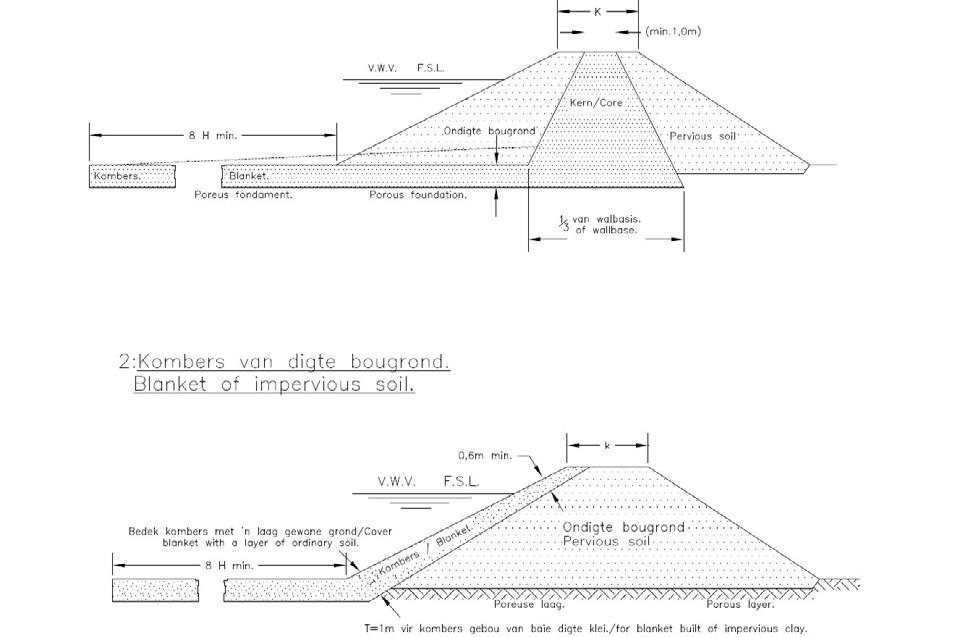
Figure 1: Blanket of impervious soil.
Treating a permeable dam basin
- Lay a thick blanket over the entire basin as indicated in Figure 1.
- If the basin is extremely porous, lay a layer of soil beneath the blanket.
- If the soil in the basin consists of sand, clay and silt, plough 250 mm to 300 mm deep when moist and consolidate with animals or mechanically.
- Compact naturally by means of silt deposits.

Figure 2: Drainage from toe of wall.
Drainage of the toe of the wall
The seepage line through the wall is intercepted by a filter drain. It reduces the danger of failing (Figure 2).
The construction method
General guidelines
- The topsoil must remain uniformly moist at optimum moisture quality during construction. It must neither be too wet nor too dry.
- It must be 2% below optimal moisture condition for good compaction. To obtain an equal moisture distribution, the use of a sprinkler irrigation system is recommended.
- Build up the earth wall uniformly in layers of 100 mm to 250 mm thick and compact the soil thoroughly to ensure maximum density. For permeable building soil, the layers must not be thicker than 250 mm and for clay soil, not thicker than 100 mm.
- The wall should be built slightly concave in cross section and horizontal or convex in the length of the wall.
- The subsequent layers must not differ much in texture and thickness, and must be built up over the entire length of the wall. Change the routes of heavy machinery over the wall to ensure good compaction, or use special implements.
- The soil against the shoulder wall, key wall, cut-off walls and around the pipes must be selected dense material and must be thoroughly compacted by hand or mechanically in thin layers at optimum moisture content.
- All concrete or masonry work must be sloped slightly on the earthwork side to ensure proper compaction of soil against it.
- Take care that heavy implements do not damage concrete works.
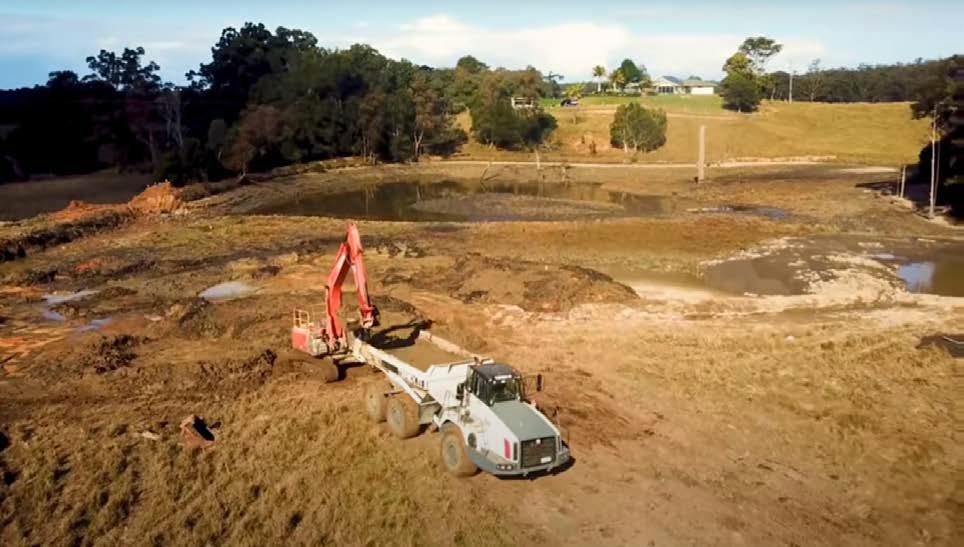
Heavy implements at work building a dam wall.
Use of a tractor and scoop for building earth dam walls
The following explanation rests on the assumption that the foundation is dense and the building soil of good quality.
According to measurements indicated on the plan, the base that will be covered by the wall is carefully marked on the site with firmly planted, easily noticeable pegs.
The first step in the construction, as mentioned before, is the clearing and preparation of the base of the dam wall. Trees and shrubs are removed. The base is then ploughed, and the entire layer of humus is removed. A depth of 200 to 300 mm is usually sufficient. This humus rich material is kept away from the building activities, usually directly downstream of the wall. It is later placed over the entire wall as a final layer.
The entire base of the wall is then ploughed again. The coarse surface ensures a good joint between the floor and the building material of the wall. The key trench is then excavated. The key trench is dug on the centre line over the entire length of the wall. The bottom width of the trench for a tractor dam scoop is approximately 3 m. The depth is usually 0,6 m to 1,0 m in the firm soil and the side slopes a minimum of 1 : 1. The purpose of the key trench is to prevent seepage between the original soil and the soil of the dam wall.
The soil in the cut-off trench can be used for building the wall. The actual building of the wall can be started on the coarsely ploughed floor next to the key trench, after it has been moistened and thoroughly consolidated. Building soil taken from the dam basin must be taken from at least two locations on both sides of the water course. The loading locations must first be prepared. The humus rich topsoil is also kept aside for the final rounding off of the wall.
The haulage circuit must be planned thoroughly in a route forming a figure of eight as clearly demonstrated in Figure 3.
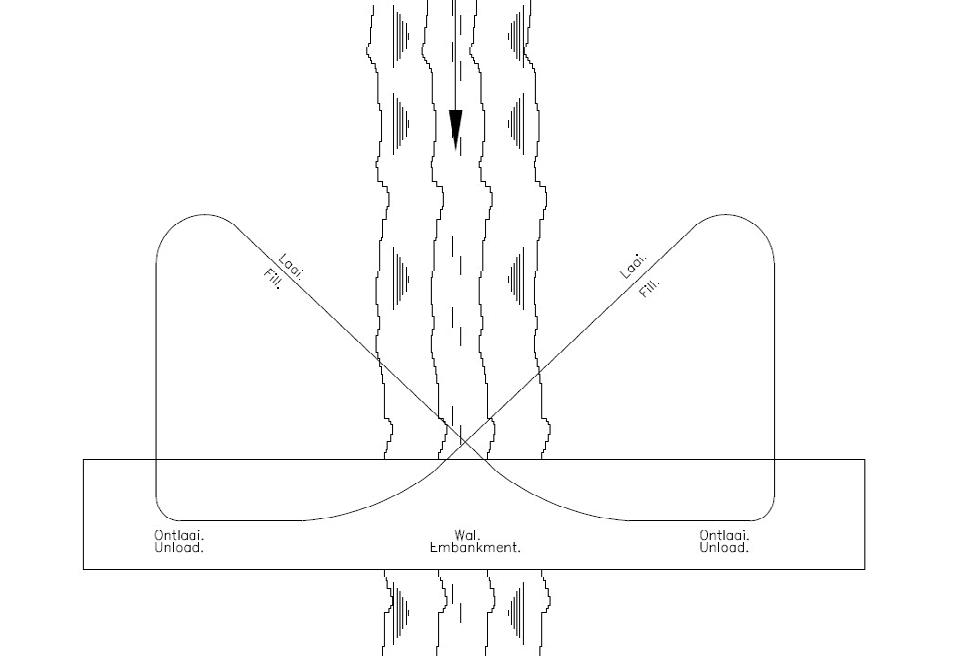
Figure 3: The building cycle
The following points are important to ensure efficient and economic work:
- If the building soil at the loading location is hard, it must first be broken with a heavy plough or if possible, with a ripper. If practically possible and feasible and if the moisture content of the soil is too low, wet the soil at the loading location thoroughly beforehand. It is a more efficient method than wetting the soil on the wall.
- Always fill the scoop slope downwards. It ensures full loads and requires less power. By loading slope downwards, a desirable mixing of the soil, which may differ at various depths, is obtained.
- Load in thin, equal layers, usually 200 mm thick, on a straight route.
- Plan and do excavations and wall fillings in such a way that good drainage is always ensured in case of unexpected rains.
- Load as quickly as possible without overloading the tractor. Load only until the scoop is full.
- Eliminate all unnecessary turns.
- Gear changing must be done as quickly as possible and the correct gear must be selected. Avoid very steep routes.
- The road from and to the borrowing area must be well planned and adhered to. The distance to travel must be as short as possible without steep slopes, dips, wet patches and turns, and must be level and hard.
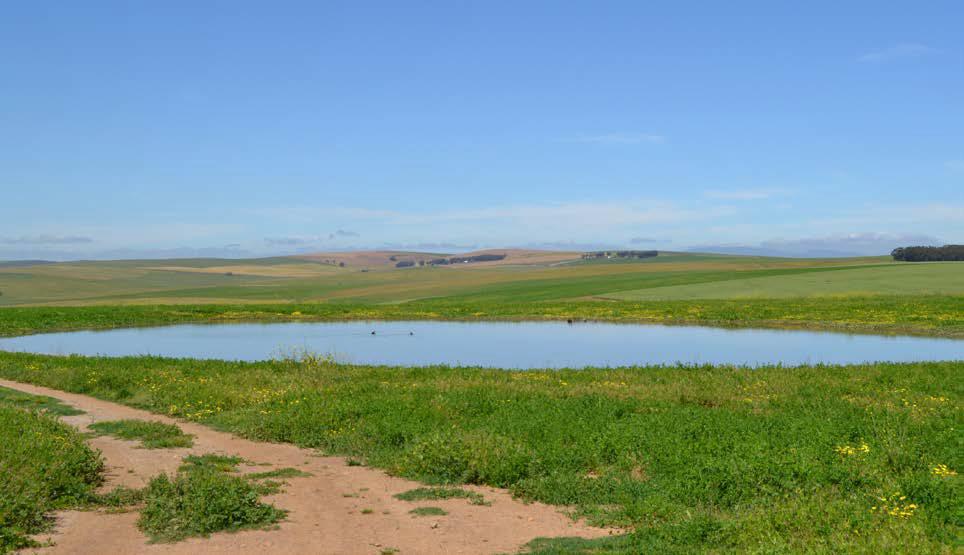
The benefits of a good hauling route are as follows:
Minimum wear of the unit, comfort for the driver, higher speed and less kilowatt needed because of lower rolling resistance, while more cubic metres of soil per hour can be moved.
- Good compaction is obtained by continuously adjusting the path of the implements over the wall.
- As previously mentioned, the layers must not be thicker than 100 mm to 250 mm, (preferably only 100 mm thick). The layers must be placed as shown in Figure 4.
- Ensure good joints between old and new layers after interruptions.
- Moist soils usually reduce the power needed to load the scoop. Therefore, avoid too wet or too dry soils.
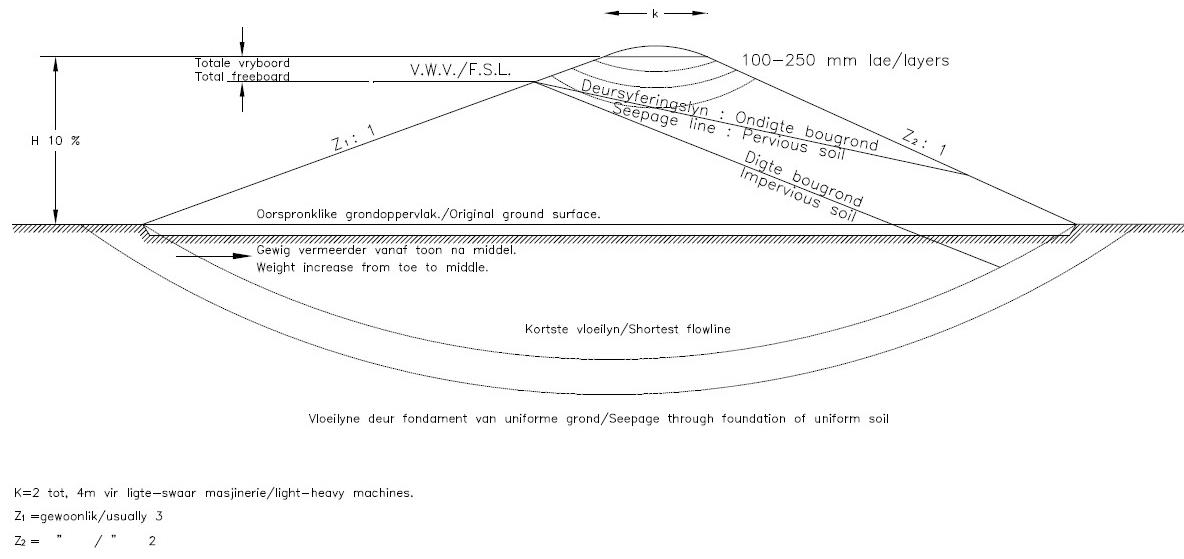
Figure 4: Compaction layers and flow lines.
Settling of the earth wall
Provision must be made for gradual settling of the dam wall during construction. Even if the wall is built under favourable conditions, namely of good building soil with the correct moisture content, thoroughly placed and compacted, there will still be a measure of settling of the wall, which is in direct relation to the wall height and represents about 5% thereof. Building conditions on the farm are not that favourable, and it is practice building the dam wall 10% higher. The construction height of the wall must therefore be sufficient to ensure the minimum total board for which the dam was designed after settling of the wall and foundation.
Protection of the earth wall
Every earth wall is subject to deterioration because of rain, wave action, trampling, and wind erosion.
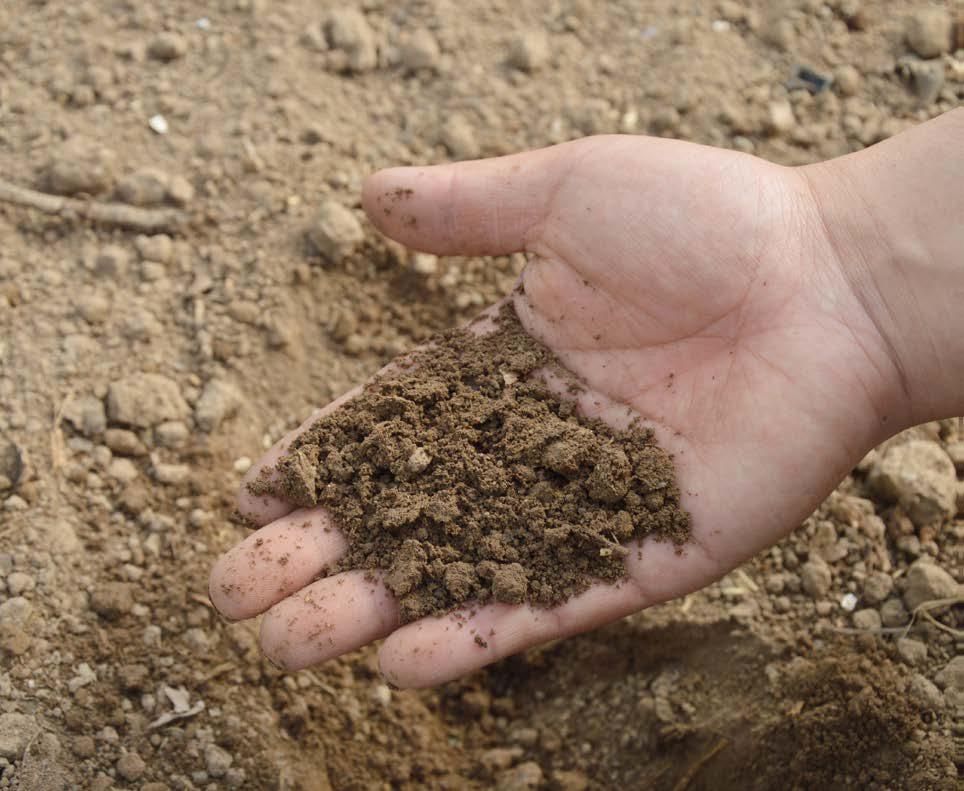
Remove and keep any humus far away from the wall during construction.
Precautions must be taken against deterioration:
- Round off the wall in all cases. It prevents concentration of water on the wall.
- If the climate is favourable, cover the wall 0,2 to 0,3 m thick with a layer of the humus rich topsoil from the base of the wall and the dam basin, which was kept aside. Fertilise this upper layerand stabilise vegetation such as kikuyu grass to protect the earth wall against rain drop erosion, run-off, and wind erosion. No trees or shrubs should be planted on or near the wall. If such a tree would die, its roots will rot and will leave pipes that can lead to seepage and failure of the wall.
- In dry regions, where efficient plant establishment is not possible, cover the wall in its entirety with a 150 mm layer of gravel and stone.
- One of the following methods can be used to protect the water side of the wall against wave actions:
- Cover the surface with a layer of gravel 150 mm to 200 mm thick and pave with stones.
- Design and build the wall with a flatter waterside slope. Cover the surface with a layer of humus-rich topsoil and stabilise suitable vegetation such as kikuyu on it if the climate is suitable.
- Also protect the bare borrowing locations against erosion, especially outside the dam basin.
- Stock should have no access to the dam site, including the outlet terrain and basin of the dam.
Published with acknowledgement to the ARC Agricultural Engineering for the use of their manuals. Visit www.arc.agric.za for more information.








